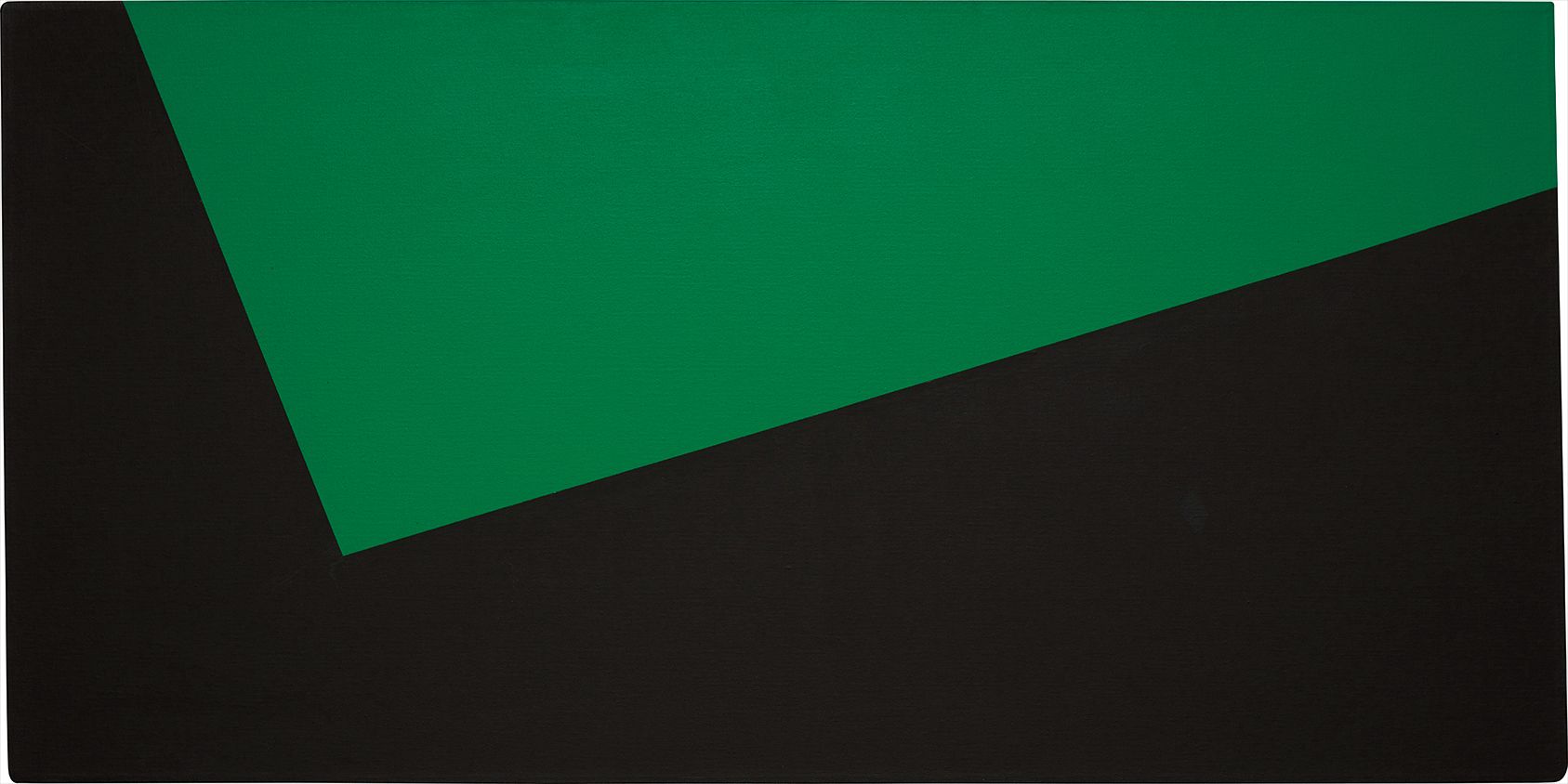

11
Carmen Herrera
Black and Green
Full-Cataloguing
Herrera’s practice of geometric abstraction developed between New York, where she moved with her husband in 1938, and their sabbatical in Paris, between 1948 and 1953. In New York during the 1940s, she studied at the Art Students League and came into the acquaintance of artists including Barnett Newman and Leon Polk Smith. “We spoke about the nature of abstraction, its very essence,” Herrera recollects. “Barney felt strongly that abstraction needed a mythological or religious basis; I, on the other hand, wanted something clearer, less romantic and dark.” That clarity soon emerged in her painting during her years in Paris, as she submitted work to the Salon des Réalités Nouvelles (1949-52), a cradle of postwar abstraction, and began to organize her canvases with new geometric rigor. “The initial point of departure in my work is a process of organization that follows the dictates of reason,” Herrera later explained. “The visual execution is contained within the latitude allowed by the order so established. It is a process that must choose, among innumerable possibilities, the one that balances reason and visual execution.” Her first hard-edged, geometric paintings appeared during this formative period, and over the following decades she has repeatedly analyzed relations of color, shape, and scale, exploring problems of symmetry and composition. Minimalist avant la lettre, Herrera’s canvases present the viewer with formidable simplicity, declaring the possibilities—and no less, the wonders—of abstraction.
“Color is the essence of my painting,” Herrera has reflected, emphasizing its structural and compositional significance. “What starts to happen to it as you reduce its numbers and come down to two colors, then there is a subtlety, an intensity in the way two colors relate to each other. Yet I am not interested in optical effects as these are simplistic to my mind.” In Black and Green, Herrera distributes the colors in dynamic juxtaposition, the block of green jutting down from the top of the canvas to meet the black field at a precise right angle. Like Red and White (1976) and the yellow-and-black Tuesday (1978), which feature similarly asymmetric, diagonal lines, Black and Green orients color in a subtle phenomenological drama, the colors suggestively expanding beyond the edges of the canvas. The painting’s acute, and less common horizontality, in distinction for example to the square dimensions of the green-and-black Untitled of the following year, stretches the field of vision laterally, projecting the flatness and sensory intensity of the two colors. “My paintings sometimes are very bold and filled with risk; other times they are subtle,” Herrera acknowledges. “I see my paintings at a crossroads, they have much in common with geometry, with minimalism, yet they are neither. To me they are good paintings that do not fit into easy categories.”
Abigail McEwen, PhD
Carmen Herrera
Cuban / American | B. 1915 D. 2022Carmen Herrera is finally receiving long-deserved recognition for her arresting, hard-edge geometric compositions. Born in Cuba in 1915, Herrera has spent most of her life outside the island, permanently settling in New York in the mid-1950s. Herrera was formally trained as an architect at the Universidad de la Habana, and later completed studies at the Art Students League in New York from 1943 to 1945. During this time she became acquainted with key figures of postwar abstraction including Barnett Newman, whose work undoubtedly influenced Herrera's minimalist aesthetic.
Herrera's work is chiefly concerned with formal simplicity and experimentation with bold color. Through the use of sharp lines and stark color contrasts, she creates dynamic and technically sophisticated compositions that reflect movement, balance and symmetry.